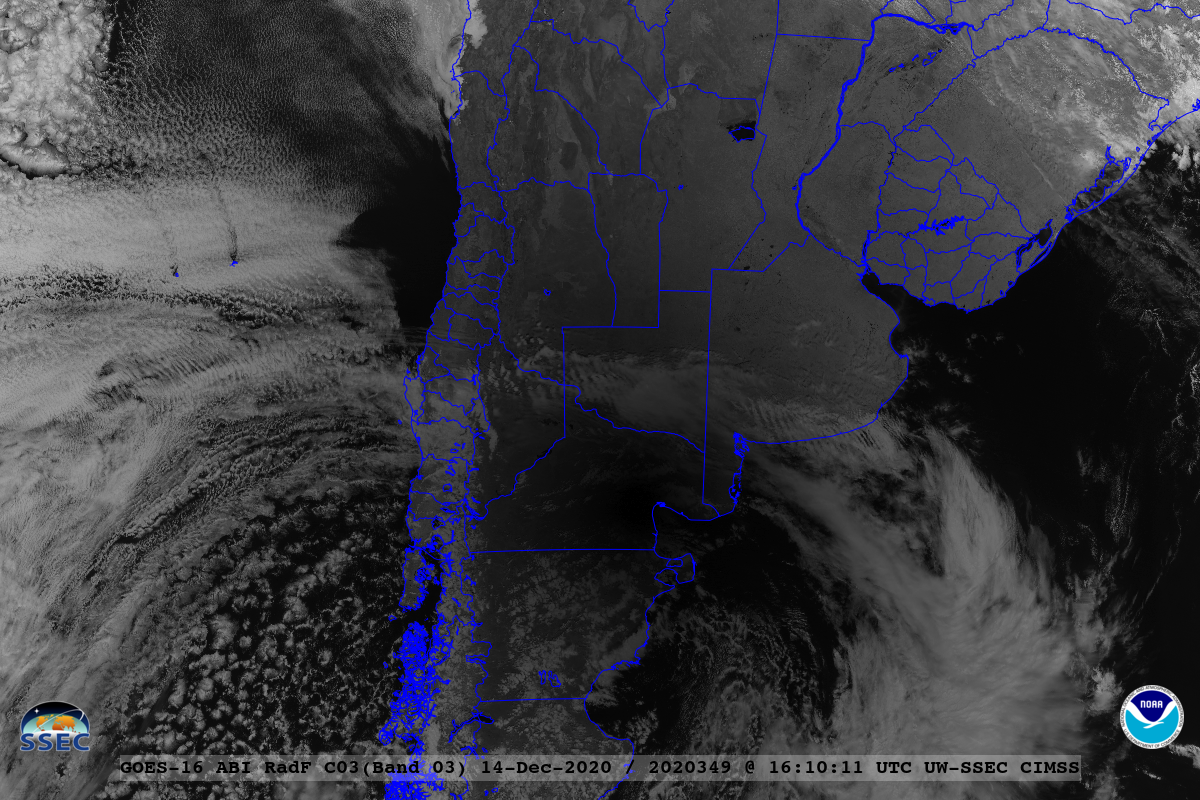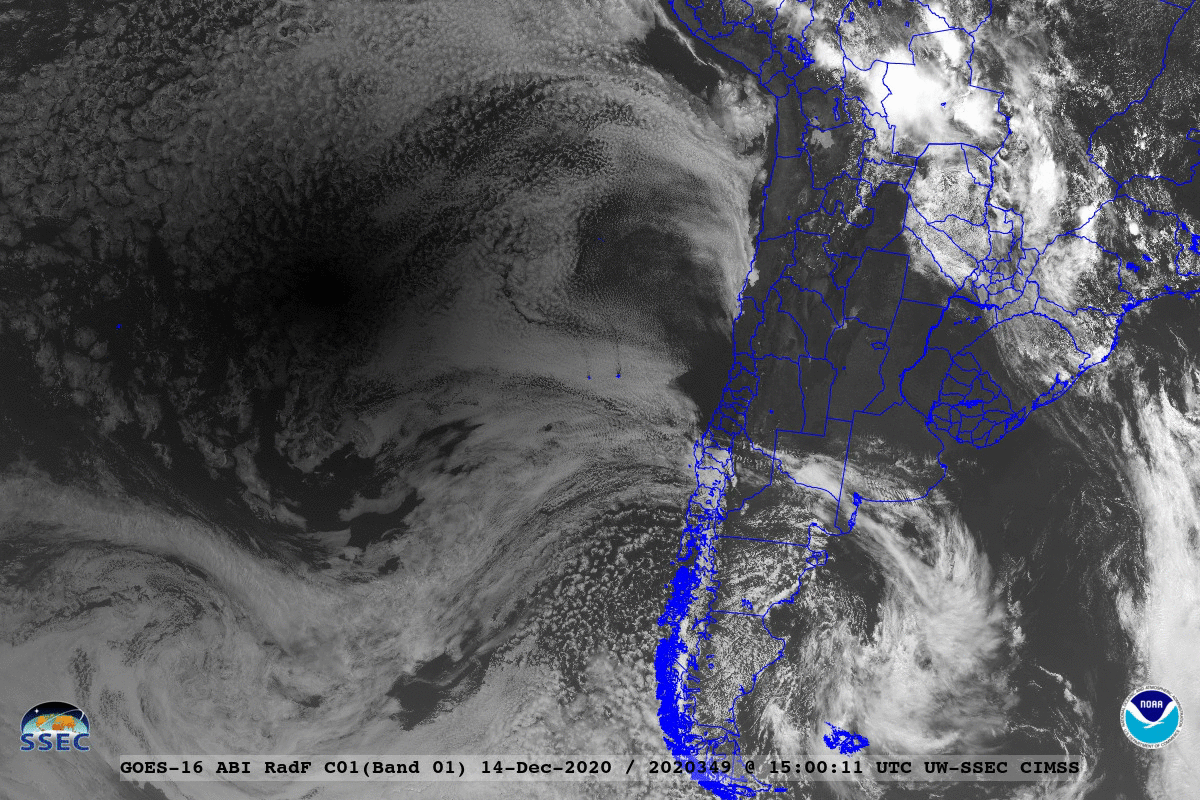Solar eclipse shadow moving across South America

GOES-16 “Red” Visible (0.64 µm), Shortwave Infrared (3.9 µm) and “Clean” Infrared Window (10.35 µm) images [click to play animation | MP4]
A larger-scale view of the path of the eclipse shadow was provided by GOES-16 CIMSS Natural Color RGB images (below).
![GOES-16 CIMSS Natural Color RGB images [click to play animation | MP4]](https://cimss.ssec.wisc.edu/satellite-blog/images/2020/12/sh_cnc_rgb-20201214_161011.png)
GOES-16 CIMSS Natural Color RGB images [click to play animation | MP4]

GOES-16 Near-Infrared “Vegetaton” (0.86 µm) images (credit: Tim Schmit, NOAA@CIMSS) [click to play animation | MP4]
![GOES-16 Near-Infrared "Vegetaton" (0.86 µm) images (credit: Tim Schmit, NOAA@CIMSS) [click to play animation | MP4]](https://cimss.ssec.wisc.edu/satellite-blog/images/2020/12/201214_goes16_band3_meso_eclipse.png)
GOES-16 Near-Infrared “Vegetaton” (0.86 µm) images (credit: Tim Schmit, NOAA@CIMSS) [click to play animation | MP4]

GOES-16 “Blue” Visible (0.47 µm), “Red” Visible (0.64 µm), Near-infrared “Vegetation” (0.86 µm), CIMSS “Natural Color” RGB and Rayleigh-corrected “True Color” RGB mages (credit: Tim Schmit, NOAAf@CIMSS) [click to enlarge]
![GOES-16 "Red" Visible (0.64 µm) images [click to play animation | MP4]](https://cimss.ssec.wisc.edu/satellite-blog/images/2020/12/GOES-16_ABI_RadF_C02_2020349_170010Z.png)
GOES-16 “Red” Visible (0.64 µm) images [click to play animation | MP4]
![NOAA-20 VIIRS True Color RGB images [click to enlarge]](https://cimss.ssec.wisc.edu/satellite-blog/images/2020/12/201214_noaa20_viirs_trueColorRGB_IcebergA68a_anim.gif)
NOAA-20 VIIRS True Color RGB images [click to enlarge]

